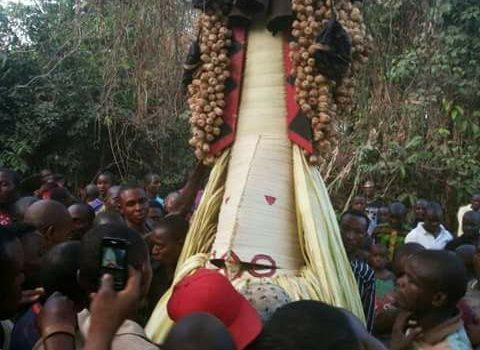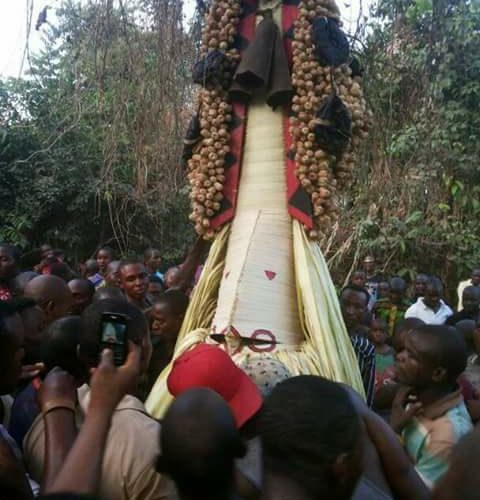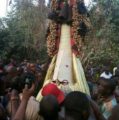


AKU has many festivals held in rotation yearly. It is interesting to note that our ancestors were wise and intelligent enough to have planned and divided the tasks and stages of carrying out of the ceremonies involved in the festivals among the villages in the town so that it is possible for us to enjoy the festivals today without controversy.
Each village in Aku is charged with the responsibility of introducing and leading a particular festival in a particular period of the year. To illustrate with some villages in the town: Use, the oldest village in Aku introduces and leads the great Ojiyi festival and also the “Ama” festival.
Umu-Ezike village introduces and leads the Fijioku (new yam) festival. Other villages take their turn during other festivals but I have only illustrated with those villages concerned in the more universal festivals. The Aku citizens of today should copy from our ancestors the noncontroversial division of responsibilities and the exercise of same without dissension.
I have chosen to write on the “Odo” festival because it is the most universal and the longest single festival in Aku. Aku is noted for its culture of Odo ancestral masquerades or Juju which takes place every odd year. The returning of the Odo called “nwanua” in February of the “Odo” year marks the beginning of the festival. nwanua or Ovuruzo is a fast runner and stages racing contests throughout the town. After the returning of “nwanua”, Ngboko village takes her turn the next Afor day. The “odo” returning festival continues like that until each of the thirteen villages in Aku has taken her turn every “Afor” day for thirteen consecutive four-day weeks.
During the season of Odo in the town, there are frequent occasions of merry-making, feasting and “Odo” musical entertainments. After six long months from February to July, a date is fixed for the homeward departure festival. The date is announced in time so as to enable the people prepare very well because the festival demands much from them.
The odo departure or “home-going festival” is held during the fifth lunar month called “onwa ise” in Aku, i.e. July ending or early August. This time is a very rainy period in the year but Aku people do all in their power to see that it does not rain within the three days closest to the festival by entrusting the days to mystical rain-makers and rainpreventers. These days are: Afor, Nkwo and Eke. The last three days are especially important because the vital ceremonies of the long festival are carried out within the aforesaid days. Afor day – the eve is devoted to clearing and cleaning the village squares, compounds, paths and the routes through which the Odo goes away. Animals like pigs, cows, goats and sheep are killed on this day in readiness for the feasting. It is also the last day for the arrival of the guests invited from outside the town to the feast. Nkwo is the climax of the feast – the day on which the odo goes away from the town. Eke is devoted for discharging some customary responsibilities such as sending gifts (money and meat) to mothers-in-law and sisters-in-law.
The Odo while going away is equipped with gifts or offers of cocks, fowls and goats which he carries along with him. The number of these gifts each Odo carries depends on how many people there are in each hamlet who are able to provide for their Odo. When the Odo is thus equipped for the journey, and was ready to go, he is accompanied by all the young men of the town. They follow a particular track or route which almost goes right round the town and finally terminates in a hill. There on the hill the young men go back while the Odo is said to meander and vanish from there to Nshi n’Amoke the land of the spirits.’
Aged men, young boys and guests stand on both sides of the route watching the processing Odo and the men who accompany him as they dance to rhythms moving along of different groups of Odo musical entertainment. Each village takes her turn in dancing and passing moving along. The dancing and onward movements continue until the last great’ “Odo” called “Ezhelim” comes and closes the function.
I have dealt in general with the order in which the ceremonies and customary rites are carried out during the Odo festival in Aku. I have also remarked earlier that men monopolize the activities and the scenery during the last day of the festival known as (Nkwo odu odo). At this juncture it is interesting to note that there are certain occasions during the stay of Odo in our town when women mingle freely with some of the jujus such as Odo Achi, Oriokwu and Ayi. These three jujus as can be seen by observing their portraits in the magazine are fine looking and admirable. Oriokwu and Ayi are women-friendly jujus (Oyi Umunwanyi) because women mingle with them and embrace them freely.
Odo Achi is an elderly and the most responsible juju in the town. It is also the tallest juju. During the stay of this juju in the town. Aku, women hold occasional meetings presided over by him to discuss matters affecting the welfare of the town. The JUJU exerts more influence on our women than any other figure in the town, and as a result the women give an immediate response to the call of the juju.
AKU PROVERBS 1. A forest that denies a young lady firewood has made her head lighter. 2. He who goes on locust hunting without telling his people should not tell them when he gets hard luck.

